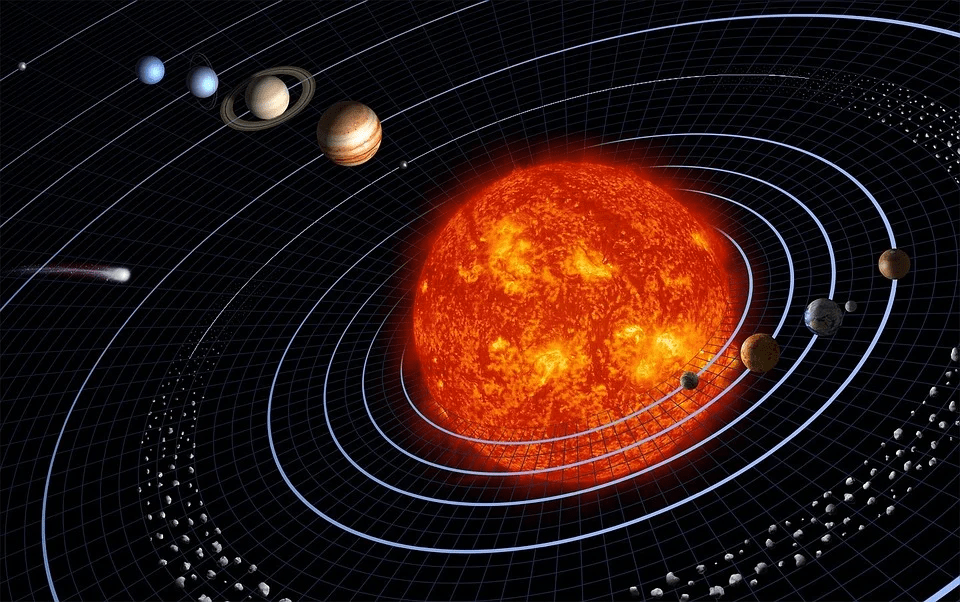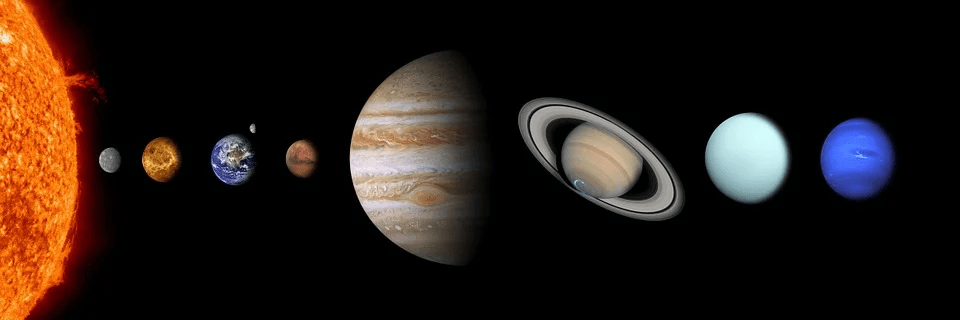The planets in our solar system are divided into two groups, the Terrestrial Planets (inner planets) which are the planets that are made of rocks, and then the Gas planets (outer planets) which are the Gas giants and the ice giants planets. They are categorized based on their composition, their structure, the position from the sun, and many more. The terrestrial planets include Mercury, Venus, Earth, and Mars while the gas planets include Jupiter, Saturn, Uranus, Neptune, and Pluto, which eventually became a dwarf planet. These planets have different temperatures that depend on their distance from the sun and many other factors like their structure, their rotation speed, the planet’s density, and of course their atmosphere. As the planets’ distance from the sun increases, their temperature decreases. In this article, you will know about the hottest and the coldest planet in the solar system and their corresponding temperatures.
HOTTEST PLANETS IN THE SOLAR SYSTEM
We will start with the planets that have a hot temperature. These planets are usually included in the inner planets or the Terrestrial planets.
- Venus
Venus is the second planet situated from the sun. Despite its distance, being only the second planet away from the sun, this planet is the hottest planet in the Solar System. It has a temperature of approximately 464 degrees Celsius. The atmosphere on this planet is very dense that is why it traps heat just like how greenhouse does. Because it traps a generous amount of heat, Venus technically became the hottest planet in the Solar System.
- Mercury
Mercury is the first planet from the sun. However, it is only the second hottest planet in the Solar System. This is due to its very thin atmosphere that is not able to trap the heat making the heat escape the insides of this planet. Mercury also has a slow rotation period therefore its temperature differs greatly in its daytime and its nighttime sides. This second hottest planet from the solar system has an average temperature of 167 degrees Celsius.
- Earth
Our very own planet, the third planet from the sun. The Earth is the third hottest planet in the Solar System. This planet has the perfect temperature that could support life because of its air and a suitable type of atmosphere. Earth has a lesser amount of carbon dioxide than that of Venus and Mars that is why the temperature on this planet is moderated and is absorbed by plants which also excretes oxygen. The Earth has a temperature of approximately 15 degrees Celsius.
- Mars
Mars is the fourth planet situated in the Sun and is also the second-smallest planet in the Solar System following Mercury. This planet has the closest temperature similar to Earth’s. Mars has a thin atmosphere and has a temperature of -65 degrees Celsius.
COLDEST PLANETS IN THE SOLAR SYSTEM
The following list is the planets that have a cold temperature. Included in this list are the Gas planets or the Gas or Ice giants.
- Neptune
Neptune is the eighth planet in the Solar System, the farthest planet from the sun. Due to its distance from the sun, Neptune became the coldest planet in the Solar System. It receives a little amount of warmth from the sun rays or even none at all. This planet has an average temperature of -200 degrees Celsius.
- Uranus
This is the seventh planet in the Solar System, the second coldest planet in the Solar system. Uranus consists of ice particles from water, ammonia, methane, and hydrocarbon. This planet is composed of helium and hydrogen just like Jupiter and Saturn. Uranus has an average temperature of -195 degrees Celsius.
- Saturn
This planet is the second largest planet and the sixth planet in the Solar System. Saturn is the third coldest planet with an average temperature of -140 degrees Celsius. Saturn’s atmosphere is composed of molecular hydrogen and also helium, similar to Uranus and Jupiter’s atmosphere. The core of this planet is composed of iron, silicon, and oxygen compounds.
- Jupiter
Jupiter, the largest planet in the Solar System, is the fifth planet from the sun and the first planet from the sun that has a cold temperature. Jupiter’s atmosphere has a similar composition to that of Saturn and Uranus. It is composed of hydrogen and ¼ of the mass is helium. The atmosphere of this planet also consists of ammonia crystals and is most likely composed of ammonium hydrosulphide. Jupiter is the least cold planet with an average temperature of -110 degrees Celsius.


